When exploring the Brucemore mansion in Cedar Rapids you will find yourself on an immersive voyage through the corridors of history, where the elegant architecture and captivating stories of the past come together to create a truly enchanting experience.
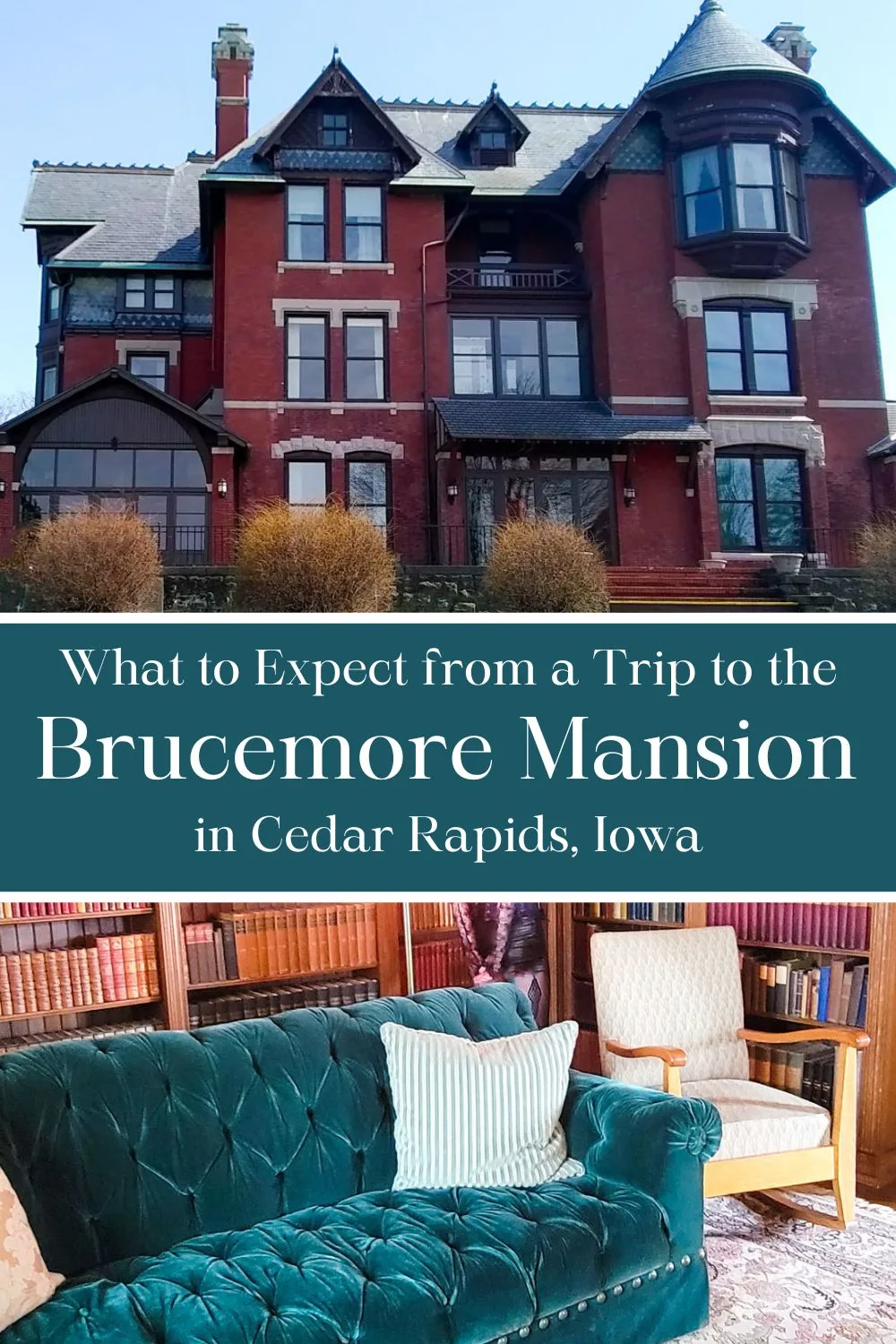
Discover the rich history, the grandeur of the Queen Anne-style mansion, and the cultural tapestry woven by the prominent families who called this estate home. Join us on a journey through the heart of Cedar Rapids, where the past comes alive within the 21-room mansion—a true testament to elegance, heritage, and the enduring spirit of Iowa.
The Three Wealthy Families of Brucemore
When touring the Brucemore mansion in Cedar Rapids, you will get to know the history of the three wealthy families who once lived in this impressive residence. Each family, with its unique legacy, has left a mark on the grandeur of Brucemore and the surrounding community.
The story of the Douglas, Sinclair, and Hall families unfolds within the walls, offering a captivating journey through time.
The First Family of Brucemore
The Sinclair family, the mansion’s first occupants, acquired a sprawling 10-acre plot and oversaw the completion of its construction in 1886. Once the children had grown and moved out, the family traded homes with a local family, allowing the grand space to serve a new purpose.
In 1906, George and Irene Douglas, along with their daughters Margaret and Ellen, assumed residence in the mansion and gave it the name it is still known by today, Brucemore.
The Second Family of Brucemore
Merely two years later, the Douglas family expanded the occupants of this stately home to include their newest addition, daughter Barbara. They also expanded the property by purchasing several more acres and added many buildings and gardens to this impressive estate.
The Third Family of Brucemore
In 1937, following Irene’s passing, Margaret, the eldest child of the Douglas family, and her husband Howard Hall inherited the estate. Upon Margaret’s passing in 1981, the magnificent home was generously bequeathed to the community.
The Brucemore mansion is now owned by the National Trust for Historic Preservation and operated by Brucemore, Inc.

The Library at Brucemore
Since 1886, Brucemore’s library has undergone a fascinating evolution, shifting from Caroline Sinclair’s southwest corner to the Douglases’ northwest corner, where it transformed into a formal space and was expanded by Irene Douglas in 1934, then adapted by the Halls in 1937.
The meticulous 1997 restoration, guided by archival photos, ensured the preservation of its authenticity, displaying Hall-era objects and photos as a dynamic testament to Brucemore’s rich history.
The library boasts an impressive collection of Douglas family books, curated with Irene Douglas’s personal touch, including her hand-bound creations. Among these, the complete works of Shakespeare stand out, allowing visitors to marvel at the literary legacy housed on the library shelves.
The Famous Pets of Brucemore
Brucemore mansion, a haven of history and charm, has hosted a delightful array of pets over the years. The Carriage House sheltered horses, a cow, and the beloved Shetland pony.
The household pets included a playful monkey and loyal dogs, notably the unforgettable German Shepherds. Their enduring presence is immortalized in the Pet Cemetery and statues that grace the estate, serving as timeless tributes found on the property to this day.
Amidst the usual companions, a royal resident took center stage — Leo the Lion who was a close relative of the famous MGM lion named Jackie. Over the years, Howard Hall’s Hollywood connections brought three lions to Brucemore, all named Leo.
From a lion playing like a kitten to Leo’s amusing antics with Max, the German Shepherd, Brucemore mansion is not just a historic marvel but a sanctuary of endearing tales from its furry and feathered inhabitants.
In 1954, a letter from one of Howard’s friends mentioned that “Leo is no longer at Brucemore,” sparking speculation that Howard may have played a role in helping Bever Park acquire a lion named “Lou,” adding to the diverse array of animals at Bever Park in Cedar Rapids.
Visitors can watch home videos and view pictures of the family playing with the animals on the property and even catch a glimpse of these exotic pets inside the house.
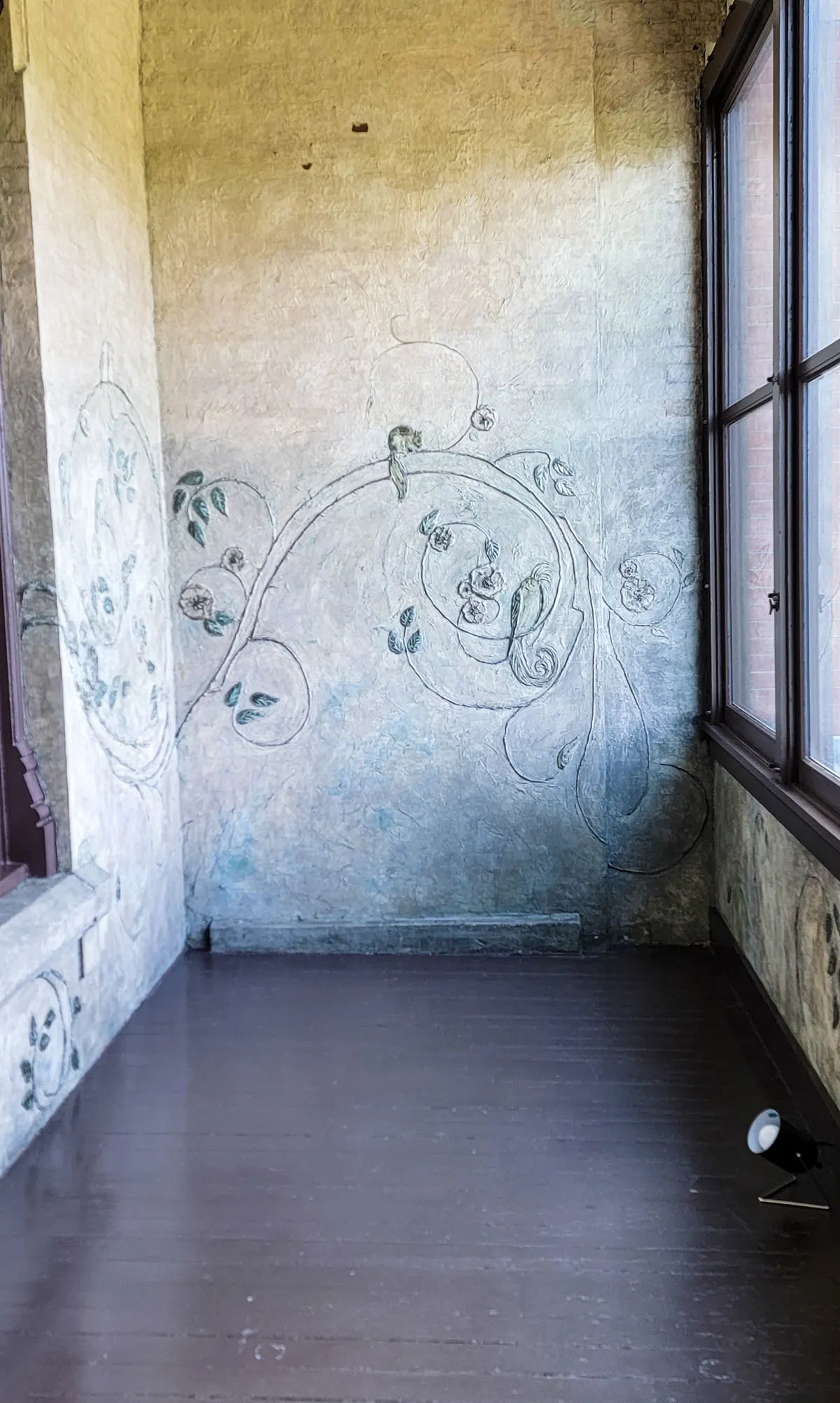
The Grant Wood Porch at Brucemore
In 1925, Irene Douglas enlisted the talents of a budding local artist, Grant Wood, to adorn a sleeping porch for her daughter. Wood, then on the brink of national recognition, was actively engaged in local projects, including a noteworthy series of paintings for the Cherry Building in Cedar Rapids, now recognized as NewBo.
During his earlier collaboration with the Douglas family, specifically on the sleeping porch, Wood’s artistic endeavors were compensated with a modest sum of $182, reflecting an era when his fame had not yet reached its peak.
In 1930, Grant Wood crafted the iconic “American Gothic” within the walls of his residence at 5 Turner Alley in Cedar Rapids, also known as The Grant Wood Studio.
This masterpiece portrayed a dwelling in Eldon, Iowa, famously recognized as The Original American Gothic House. Wood envisioned the occupants he idealized for this distinctive home, and these imagined figures were immortalized in front of the unique structure in his renowned painting.
While American Gothic may be his most recognizable work, The Sleeping Porch at Brucemore unveils a lesser-known but equally captivating facet of the artist’s early career.
Grant Wood’s early artistic journey intersects with the Douglas family’s history as the building housing Wood’s studio at 5 Turner Alley once served as the Douglas family’s carriage house, linking their legacy as founders of Quaker Oats to Wood’s formative years.

The Skinner Player Pipe Organ
In 1929, Irene Douglas enlisted the renowned Ernest M. Skinner to craft Opus 754, a residential organ that stands as a masterpiece of musical engineering. The grand sum of $13,675.13 secured its place among the esteemed possessions of luminaries like Andrew Carnegie, Louis Comfort Tiffany, and John D. Rockefeller.
Among the limited collection of residential organs ever fashioned by the Skinner Organ Company, Opus 754 is one of a precious few, merely six, that remain unaltered and in its original location at Brucemore.
Functioning as the epitome of home entertainment during the 1920s, this residential player organ allowed Irene to effortlessly enjoy and share music with her guests at the push of a button.
Visitors of this historic mansion can ask the staff to play the organ so they can hear the sounds of Brucemore.
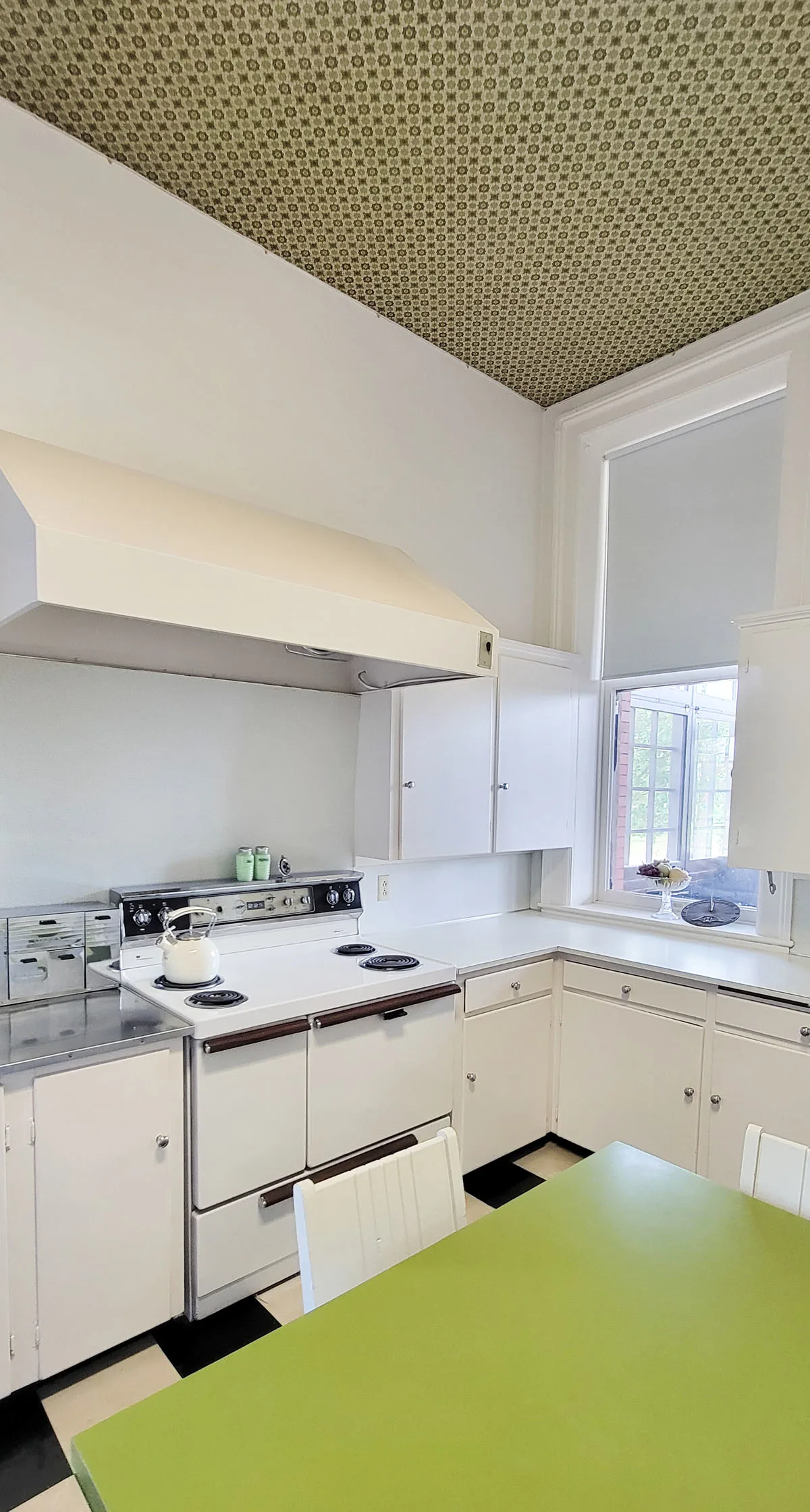
The Servant Spaces of the Brucemore Mansion
Amidst the grandeur of Brucemore mansion’s historical charm, special attention is given to the dedicated workforce that sustained its lavish lifestyle. The servants’ quarters, including the butler’s pantry, kitchen, and servant’s hallway, are essential components of the mansion’s design.
Reflecting the architectural trends of the 1880s, these spaces are equipped with discreet entrances, dining areas, bathrooms, and staircases, deliberately separating the family and staff domains.
Visitors are granted access to explore these servant quarters, offering a unique glimpse into the daily operations of the mansion. If you’re anything like me, the kitchen stands out as the highlight of the tour.
While the rest of the house boasts magnificent grandeur, there’s a special charm in witnessing the heart of the mansion where culinary magic unfolded, providing a delightful contrast to the opulence showcased elsewhere.
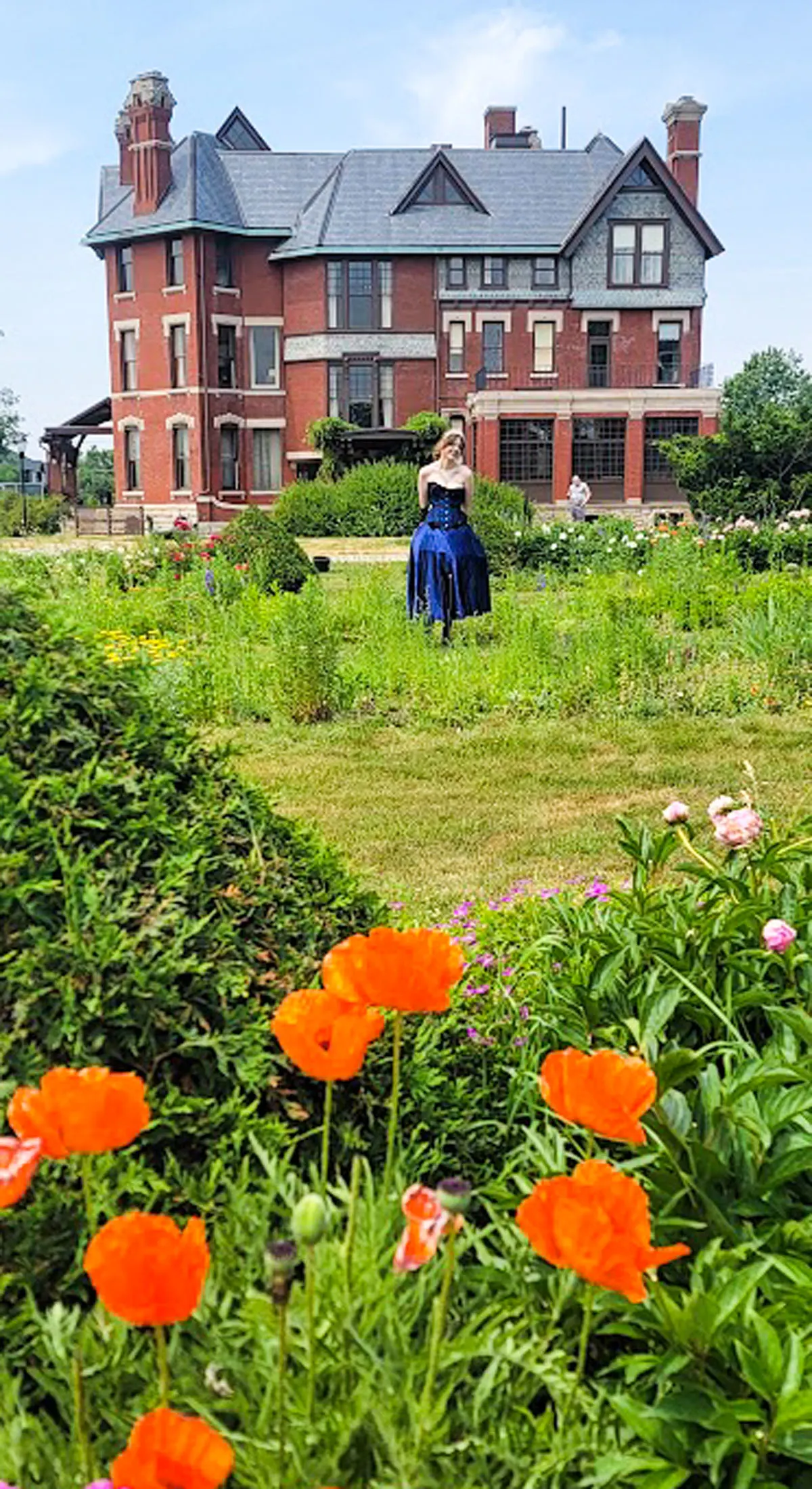
The Gardens of the Brucemore Mansion
Step into the enchanting realm of Brucemore’s gardens crafted in 1910 by Irene Douglas and Helen Agnes DuPuy, the Formal Garden boasts perennial beds adorned with precisely outlined borders, exuding timeless elegance.
Adjacent to this, the Night Garden, designed with light-colored plantings, radiates ethereal charm, reflecting the moonlight in its delicate hues.
The Cutting Garden, nestled within the Servants’ quarters, not only thrived as a vibrant haven of flowers and vegetables for the Douglas family but also generously provided gifts for their cherished friends.
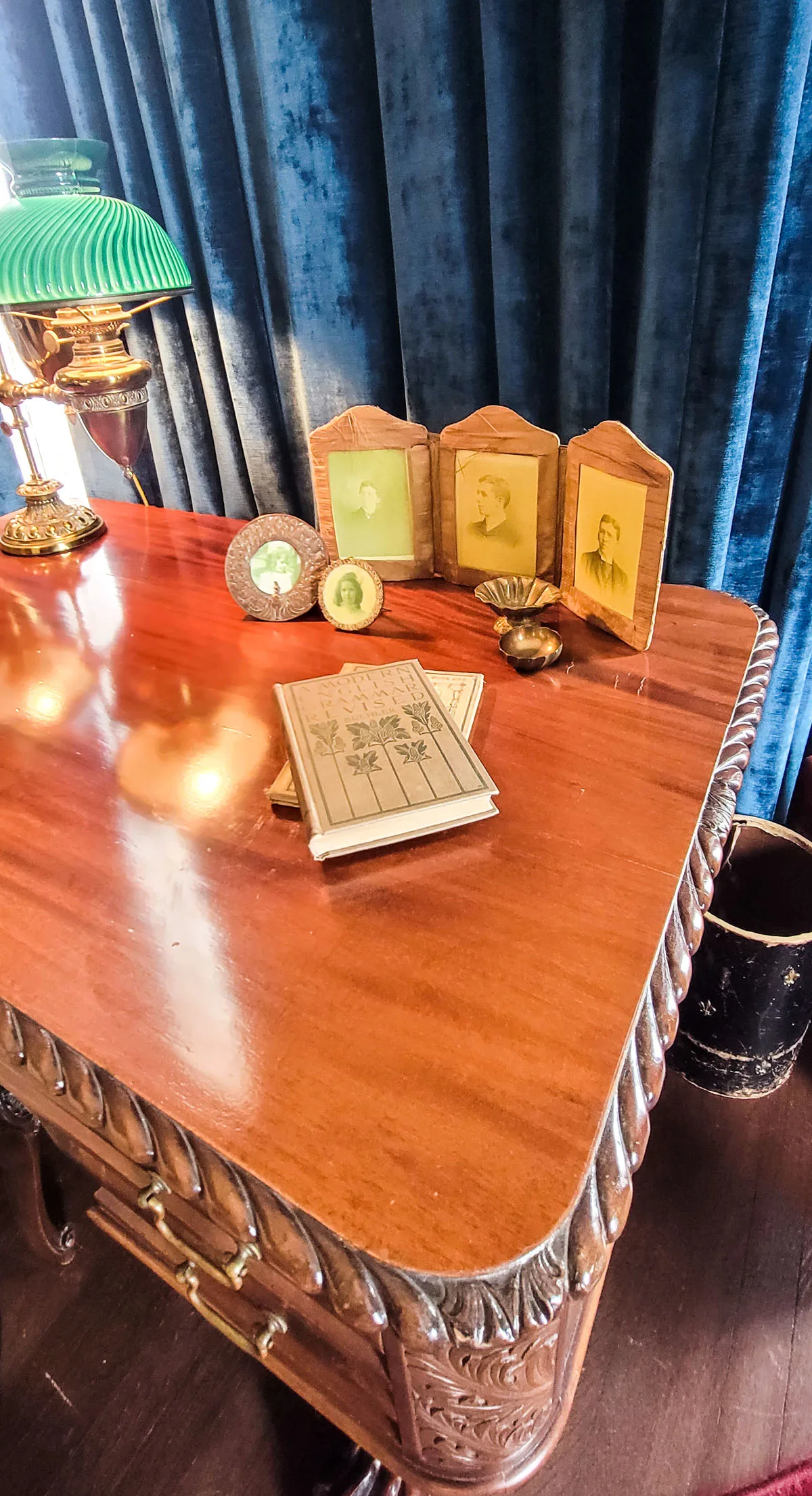
What to Expect from a Visit to the Brucemore Mansion
Brucemore is located at 2160 Linden Dr SE, Cedar Rapids, IA 52403.
Visitors are welcome to freely roam the enchanting gardens, wander through the charming pet cemetery, and traverse the expansive 26-acre estate nestled in Cedar Rapids, Iowa. Those eager to dive into the mansion’s rich history can opt for a self-guided tour at a nominal fee of $10 for adults and $5 for students.
For a more immersive experience, history enthusiasts can indulge in a 45-minute guided tour that is $12 for adults and $7 for students, offering a deeper understanding of the captivating narratives that unfold within the mansion’s walls. Visit the Brucemore website for more information.
You may also be interested in learning about the Best Things to Do in Eastern Iowa.
For more unique travel ideas, consider signing up for the free newsletter or follow along on social media so you never miss another post again!
About Thirty Something Super Mom

My journey started after a Crohn's disease diagnosis, inspiring a commitment to well-being. This site shares my distinctive approach to healthy living with my collection of nutritious recipes that boast authentic flavors, mimicking the indulgence of traditional dishes. I love sharing guilt free recipes for low carb, keto, gluten-free, paleo, and the specific carbohydrate diet. I also share tips on natural living, including homemade cleaners and cleaning hacks. I also share my experience as a veterinary technician and pet groomer, to integrate pet health tips, homemade dog food recipes, and grooming insights to ensure your pets thrive.
